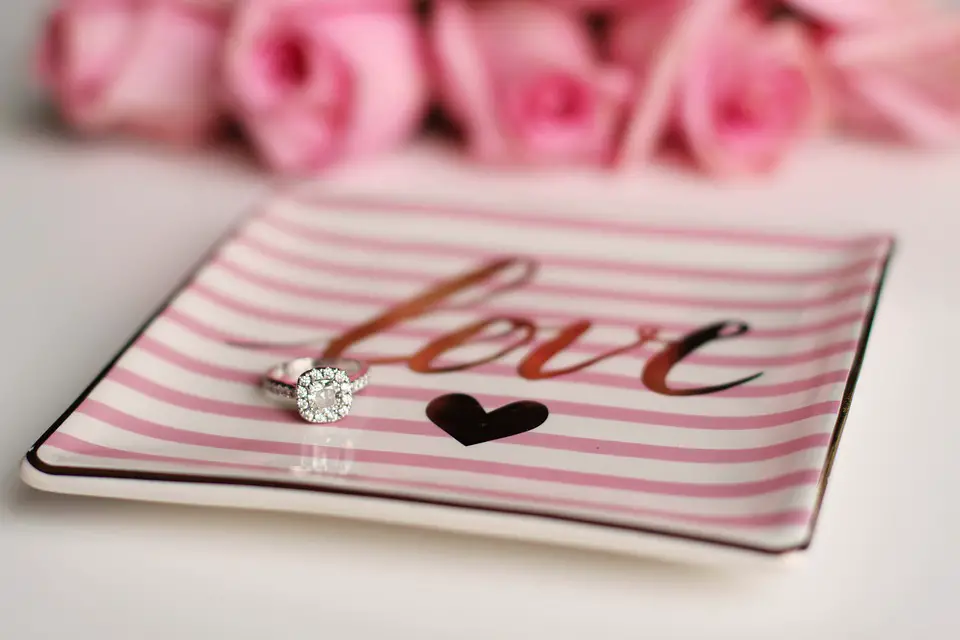There are a lot of rumors out there about lab-created diamonds versus mined diamonds, and you too may be asking yourself the question: Are lab-created diamonds real?
In fact, lab-created diamonds are real and have the exact same chemical and physical properties of diamonds that have been mined from the earth. The two are nearly indistinguishable, but for the fact that lab-created diamonds actually have fewer impurities, having been grown in a controlled environment.
“Laboratory-made diamonds have comparable mechanical and electrical properties with natural diamonds.”
H.M Strong & R.M. Chrenko The Journal of Physical Chemistry
Lab-created diamond pass as real in diamond testers (because they ARE real!) and even seasoned jewelers have a very difficult time telling them apart from mined diamonds.
Besides their origin (one grown in a lab and one in the earth), there is no significant difference between lab diamonds and mined diamonds except for the cultural stories we tell ourselves about them — stories which have been shaped by expert marketing and modern wedding culture.
Because lab-created diamonds are still new in the consciousness of many consumers, many people still don’t know much about them and so may prefer to buy diamonds that were mined. However, this is all starting to change as more and more people realize that we have a choice between two very REAL diamond options…
In this post, I’ll break down the minuscule differences between lab-created diamonds and mined diamonds, including the most important difference for us consumers (which just so happens to NOT be minuscule): the difference in price.
You may also enjoy my articles:
- Eco-Friendly Wedding Rings & Bands (A Helpful Guide)
- 25 Eco-Friendly & Conflict-Free Wedding Ring Companies
What’s the difference between lab-created diamonds and mined diamonds?
The biggest difference between mined diamonds and lab-created diamonds is how they are created. Mined diamonds are mined from the earth, after taking millions of years to form under immense pressure. Lab-created diamonds are man-made, created in a laboratory in about a month’s time. However, they are both diamonds, having the same chemical and physical properties, and indistinguishable without super high-tech equipment.
“Lab-grown diamonds have essentially the same chemical composition, crystal structure, optical and physical properties of diamonds extracted from mines and are thus 100% diamond. The only difference between lab-grown and mined diamonds is that one was created within and extracted from the Earth, and the other was created in a state-of-the-art laboratory.”
The International Grown Diamond Association (IGDA)
So what are the differences? There are a few:
| Lab-created Diamonds | Mined Diamonds |
| Are also called cultured diamonds, engineered diamonds, synthetic diamonds and man-made diamonds | Are also called natural diamonds |
| Are real diamonds made of carbon | Are real diamonds made of carbon |
| Formed in about 4 weeks | Formed over millions of years |
| Formed in a laboratory | Formed in the Earth |
| Most commonly consist of mainly carbon atoms and isolated boron atom impurities (known as Type IIb diamonds)* | Most commonly consist of mainly carbon atoms and pairs of nitrogen atoms (known as Type Ia diamonds)* |
| Created using one of two scientific processes: Either HPHT (High Press High Heat) or CVD (Chemical Vapor Deposition) | Created through a process of volcanic eruptions |
| Environmental concerns: Created in factories often powered by non-renewable energy sources | Environmental concerns: Gem exploration, excavation, and transportation from isolated sites can use a lot of energy, causes soil erosion; deforestation; destruction of entire ecosystems |
| Ethical concerns: Varies by company but no abuses reported | Ethical concerns: Child laborers in Sierra Leona and elsewhere; Dangerous mining conditions that have led to many accidents; long, unsafe and unregulated working conditions for diamond polishers in India that lead to tuberculosis and respiratory diseases, and suicide |
| Usually cost 30% less than mined diamonds | Are usually 30% more expensive than lab-created diamonds |
*Knowing these properties about a diamond is only an indication that it MIGHT be lab-created or mined, and not at all a clear way of telling the two apart.
You may also enjoy: What Exactly is an Eco-Friendly Diamond?
As I mentioned earlier, the biggest difference between these two types of diamonds (lab-created and mined) is the story we tell ourselves. Mined diamonds are formed in the earth over millions of years, under immense pressure, and take hours of manpower to unearth. This lends itself to a romantic vision of love created and forged over time — the sad part is that, in reality, this mining process devastates the Earth’s ecology… and isn’t such a romantic story after all.
We’ve been told by marketing campaigns that “a diamond is forever” and well, so is a lab-created diamond. They are both forever, but one has fewer ethical concerns and is much cheaper.
But are lab-created diamonds better than mined diamonds? Let’s look at the next section…
Are lab-created diamonds better than mined diamonds?
They are both real, but their processes of creation are different and ultimately their price points are different. But which is better? This is a matter of opinion.
I believe that the pros of lab-created diamonds in terms of environmental issues, ethical issues, perfection of the gem stone, and price outweigh those of mined diamonds and that ultimately lab-created diamonds are better than mined diamonds.
Objectively, mined diamonds are destructive to the environment and have a dubious history of so-called “conflict diamond” nightmares on their record. Lab-created diamonds aren’t perfect either, also using a lot of nonrenewable resources to create in a lab; however, their processes haven’t been knocked for ethical concerns like the diamond mining industry has.
Lab-created diamonds are also sold at a fraction of the price of real diamonds! And the reason is that many people still want “the story” – they fall for the narrative of the diamond created in, and ripped from the Earth. Personally, I don’t want anything that was ripped from the Earth. Please, just leave it in the Earth. Thank you! 🙂
This is a complicated topic and I suggest you read my other post that goes into more detail on these two types of (both real!) diamonds.
Do lab-created diamonds test as real with a diamond tester?
Yes, diamond testers will reveal lab-created diamonds to be real diamonds, because they are the same chemically, physically and optically as a mined, or natural, diamond.
The only way to tell lab-created diamonds apart from mined diamonds is to have them identified at a professional gemological laboratory or using sophisticated devices developed by GIA (Gemological Institute of America).
Are lab-created diamonds worth as much as mined diamonds?
Lab-created diamonds are cheaper than mined diamonds, and many jewelers will tell you that they have a lower resale value, which would technically make them worth less than mined diamonds. However, the value of a diamond is in the heart and mind of the consumer and the consumers are rapidly forcing the diamond industry to change what a lab-created diamond is worth.
More and more Millennials are becoming aware of lab-created diamonds, valuing them for their ethics and turning away from mined potentially “conflict” diamonds. Due to this trend, it’s more and more possible that mined diamonds could lose value in the future, and be forced to lower their prices to be more aligned with lab-created diamonds.
Or perhaps in the future, no one will want to buy mined diamonds at all.
What’s the difference between lab-created diamonds and Moissanite?
Stones such as Cubic Zirconia (CZ) and Moissanite aren’t diamonds. They are completely different and should not be confused with lab-created diamonds.
These are simulants – Though they may be beautiful as well, they aren’t made of carbon crystals, and don’t have that same brilliance or durability as diamonds do.




